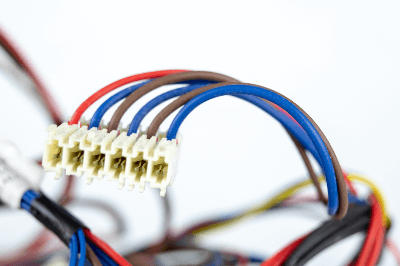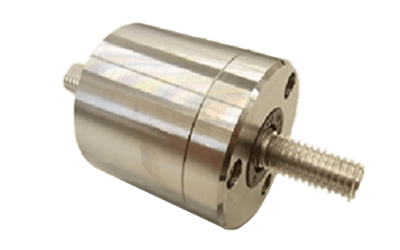What Is an Optical Modulator?
An optical modulator is a device used for high-speed modulation applications by converting an electrical signal into an optical signal for output.
Also called an E/O converter (or O/E converter for the reverse conversion), it is mainly used as part of an optical transmission device in fiber-optic communications. In conventional systems, the signal used to transmit modulated signal information is always an electrical signal.
However, in order to realize optical communications using ultrahigh-speed, low-loss, high-capacity optical fiber, electrical signals must generally be used in some way to modulate the light source and output as an optical signal. The device that plays this role is an optical modulator.
Uses of Optical Modulators
Optical modulators are mainly used as modulators to convert the modulation of electrical signals in fiber-optic communication. They play an extremely important role in optical fiber communications, which are now the foundation of information transmission.
Fiber-optic communication is an optical communication method that enables high-speed and long-distance transmission by using low-loss, wide-bandwidth optical fiber for communication lines instead of ordinary electric wires, which have high loss and are susceptible to noise. To introduce this method, a device capable of fluidly exchanging electrical and optical signals is required, and an optical modulator is used.
Principle of Optical Modulators
The principle of light modulation includes the “direct modulation method,” which uses light modulated by directly turning on and off the electrical bias of a semiconductor laser used as the light source, and the “external modulation method,” which modulates light from a semiconductor laser using an LN (LiNbO3: lithium niobate) modulator, etc. There are two types of modulation methods.
1. Direct Modulation Method
The direct modulation method is a method in which the light source, the semiconductor laser itself, modulates the optical signal. However, the response speed of the semiconductor laser itself is limited and causes wavelength fluctuations called “chirping,” so this method is not suitable for high-capacity optical fiber communications for trunk lines, where high speed is required.
2. External Modulation Method
In the external modulation method, a semiconductor laser, which is the light source, continuously outputs light of a constant wavelength. This light is input to an optical modulator, such as an LN modulator, and the amplitude and phase of the light are changed by an external electrical signal. The principle behind this is that the electrical signal is output as modulated light.
Generally, optical modulators are modulators used in this external modulation method. The method of converting electrical ON/OFF modulation into optical ON/OFF requires high-speed changes in the amplitude and phase of light, and for this purpose, physical phenomena such as light interference and electric field absorption are utilized.
Specifically, there are field-absorption (EA-type) optical modulators and Mach-Zehnder-type LN modulators. LN modulators, which are often used in high-capacity trunk line optical communications, have Y-shaped distributed optical waveguides, and by applying a bias to the waveguide and inducing a phase shift of the light, the intensity of the light passing through the LN modulator can be increased or decreased.
This method is very suitable for high-capacity, high-speed optical fiber communications because it does not, in principle, cause the chirping (wavelength fluctuation) of the direct modulation method.
Other Information on Optical Modulators
1. DC Drift Compensation of LN Modulators
LN modulators are characterized by low loss, and low chirping due to their Mach-Zehnder interference principle. However, they are subject to optical output drift variation due to temperature change and DC drift.
For this reason, manufacturers of LN modulators usually support dedicated bias controllers for LN modulators that automatically correct DC bias based on feedback information from PDs and other devices.
2. Material Innovation of Optical Modulators
Although LN modulators can suppress wavelength fluctuation extremely well compared to field absorption and direct modulation methods, their drive voltage is relatively large at around 5 V and their size is relatively large (50 mm or more), so development toward smaller size and lower power consumption is continuously being promoted.
Recently, research and development is being actively conducted by research institutes of various manufacturers to compensate for the weak points of LN modulators, such as optical waveguides formed in a ring shape on a silicon substrate, known as silicon photonics, and MQW (multiple quantum well) optical waveguides on an InP compound semiconductor.
In addition, research and development of optoelectronic fusion technology at NTT’s IWON, which actively handles optical signals as light inside the IC without an E/O converter, is also being actively pursued for even higher capacity communications in the future.




